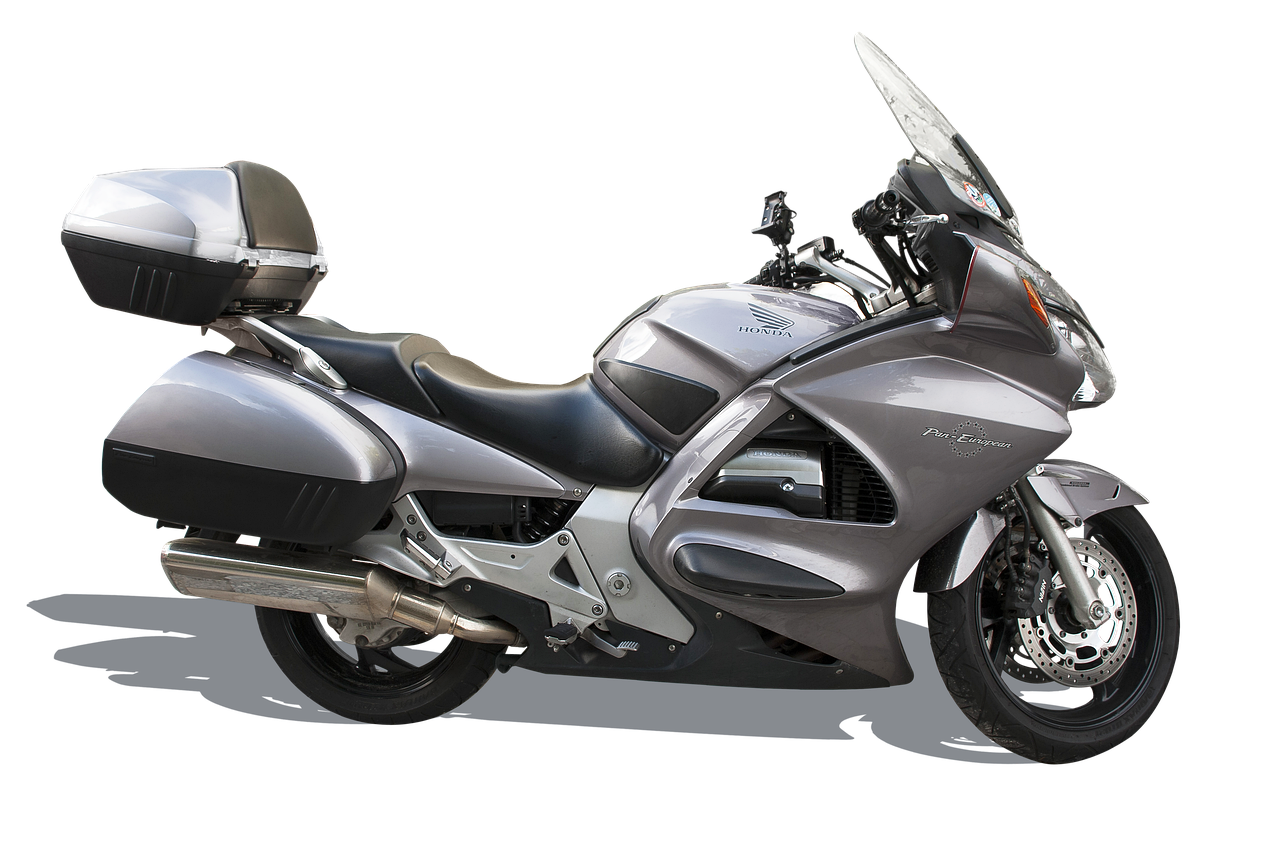This article delves into the fascinating journey of the Honda Civic, a model that has significantly shaped the automotive landscape since its debut in 1972. By examining its various generations, design transformations, technological innovations, and cultural significance, we aim to provide a thorough understanding for both car enthusiasts and prospective buyers.
Overview of the Honda Civic
The Honda Civic has been a cornerstone in the automotive industry for over five decades. Its evolution mirrors changing consumer preferences and advancements in technology, making it a critical study for anyone interested in modern car culture.
First Generation: 1972-1979
The first-generation Civic introduced a compact design that prioritized fuel efficiency, appealing to consumers during the oil crisis. Its unique styling featured a spacious interior and large windows.
Second Generation: 1980-1983
This generation brought rounded aesthetics and advanced safety features, aligning with emerging regulations. Innovations like front-wheel drive and a powerful 1.5-liter engine enhanced its appeal.
Third Generation: 1984-1987
With a sportier design, the third generation attracted a younger demographic. The introduction of the Civic Si model catered to performance enthusiasts, while also adhering to environmental standards.
Fourth Generation: 1988-1991
Notable for its hatchback variant, this generation became a cultural icon, frequently appearing in films. Enhanced performance and handling made it a competitive choice in the compact market.
Fifth Generation: 1992-1995
This generation focused on comfort and technology, featuring improved interior materials and safety innovations like airbags. It set new standards for compact cars.
Sixth Generation: 1996-2000
Emphasizing a sporty aesthetic, the sixth generation introduced the Civic Type R, showcasing Honda’s commitment to performance and advanced technology.
Seventh Generation: 2001-2005
Focusing on practicality, this generation launched the Civic Hybrid, marking Honda’s entry into the hybrid market. Its spacious design and strong sales solidified its position in North America.
Eighth Generation: 2006-2011
The eighth generation featured a bold redesign and significant technological advancements, including improved fuel efficiency and safety features, appealing to a broader audience.
Ninth Generation: 2012-2015
Addressing previous criticisms, Honda refined the Civic’s design and performance, emphasizing fuel efficiency to attract cost-conscious consumers.
Tenth Generation: 2016-2021
This generation represented a significant leap in design and technology, introducing turbocharged engines and modern features that enhanced the driving experience.
Eleventh Generation: 2022-Present
The current generation continues to evolve, focusing on sustainability and technology. With innovations in electric and hybrid models, the Honda Civic remains relevant in a rapidly changing automotive landscape.

Overview of the Honda Civic
The Honda Civic has been a cornerstone in the automotive landscape since its debut in 1972. As one of the most recognized names in the compact car segment, the Civic has undergone significant transformations that reflect changing consumer preferences, technological advancements, and broader automotive trends. Understanding its evolution not only highlights its importance in the automotive industry but also showcases its lasting impact on car culture.
Initially launched as a response to the fuel crisis of the 1970s, the Civic quickly gained traction for its fuel efficiency and innovative design. Over the decades, it has adapted to meet the demands of various markets while consistently prioritizing reliability and performance. Each generation has introduced distinctive features, making the Civic a versatile option for a wide range of drivers.
Throughout its history, the Civic has been celebrated for its affordability and practicality. It has been a popular choice among first-time car buyers, families, and even performance enthusiasts, thanks to models like the Civic Si and Civic Type R. These variants have helped cultivate a dedicated following and foster a vibrant aftermarket community.
- Generational Changes: Each generation of the Civic has introduced improvements in design, technology, and safety features, keeping it competitive in a crowded market.
- Technological Innovations: From early models emphasizing fuel efficiency to modern iterations equipped with advanced infotainment systems, the Civic has continually embraced new technologies.
- Cultural Significance: The Civic has transcended mere transportation, becoming a symbol of youth culture and a canvas for customization, often featured in films and media.
In summary, the Honda Civic’s journey from a compact car to a cultural icon illustrates its adaptability and enduring appeal. Its significance in the automotive industry is not merely about the cars produced but also about the communities and lifestyles it has influenced over the years.

First Generation: 1972-1979
The first generation of the Honda Civic, which debuted in 1972, was a groundbreaking entry into the compact car market. This model was not just a car; it was a statement that ushered in a new era of automotive design and efficiency. As consumers began to prioritize fuel economy due to rising oil prices, the Civic emerged as a solution, combining practicality with innovative engineering.
The inaugural Civic featured a distinctive design characterized by its compact size, large windows, and a surprisingly spacious interior. This design philosophy set a precedent for future models, emphasizing both functionality and aesthetic appeal. The clean lines and modern look attracted a diverse audience, making it a popular choice among young families and urban dwellers alike.
Under the hood, the first-generation Civic was equipped with a 1.2-liter engine that prioritized fuel efficiency without sacrificing performance. This engine offered an impressive mileage of approximately 40 miles per gallon, which was particularly appealing during the oil crisis of the 1970s. The Civic’s engineering allowed it to navigate both city streets and highways with ease, making it a versatile choice for various driving conditions.
The Civic quickly gained traction in the marketplace, establishing itself as a reliable and economical option. Its affordable price point and low operating costs resonated with consumers looking for practical transportation solutions. The success of the first generation laid the groundwork for Honda’s reputation as a manufacturer of dependable vehicles, ultimately leading to the Civic’s enduring popularity across multiple generations.
In conclusion, the first generation of the Honda Civic not only marked the brand’s entry into the compact car segment but also set the stage for future innovations and developments that would follow in subsequent generations.
Design Features of the First Generation
The first-generation Honda Civic, produced from 1972 to 1979, is often hailed as a game-changer in the compact car segment. Its design was revolutionary for its time, featuring a distinctive compact body that was both functional and aesthetically pleasing. This model set a new standard in automotive design, showcasing a combination of large windows that provided exceptional visibility and a spacious interior that surprised many consumers who expected tight quarters in compact vehicles.
One of the standout features of the first-generation Civic was its unconventional hatchback design, which offered versatility and practicality. This design allowed for easy access to the rear cargo space, making it ideal for urban drivers and families alike. The hatchback variant became particularly popular, as it combined the benefits of a sedan with the utility of a small wagon.
Additionally, the interior was designed with comfort and user-friendliness in mind. The dashboard layout was intuitive, featuring easily accessible controls and ample storage spaces. Passengers enjoyed a surprising amount of legroom, making long drives more comfortable than in many competitors of the era.
Moreover, the Civic’s design was not just about looks; it was also about fuel efficiency. The lightweight construction contributed to its excellent mileage, resonating well with consumers during the fuel crisis of the 1970s. This focus on efficiency, combined with its unique design, helped establish the Civic as a leader in the compact car market.
In summary, the first-generation Honda Civic’s innovative design and practicality laid the groundwork for future models, influencing the direction of compact cars for decades to come. Its legacy continues to be felt in modern iterations, which still prioritize space, efficiency, and user-friendly features.
Engine Options and Performance
The Honda Civic has long been recognized for its reliability and efficiency, and the first generation, produced from 1972 to 1979, set the tone for what would become a legendary lineage in the automotive world. One of the standout features of this inaugural model was its 1.2-liter engine. This engine was designed with a strong emphasis on fuel efficiency, which was particularly appealing during the oil crisis of the 1970s.
The first Civic’s engine not only delivered adequate power for city driving but also offered impressive mileage, making it a practical choice for consumers who were increasingly concerned about fuel costs. Reports indicated that drivers could achieve up to 40 miles per gallon under optimal conditions, a feat that resonated with a market looking for economical solutions.
In addition to its fuel efficiency, the Civic’s lightweight design contributed to its performance. Weighing in at around 1,800 pounds, the vehicle was nimble and easy to maneuver, making it suitable for urban environments. The combination of a compact size and a responsive engine allowed drivers to navigate through tight spaces with ease, enhancing the overall driving experience.
Moreover, the first-generation Civic was equipped with a front-wheel drive system, a relatively new feature at the time. This design not only improved traction but also allowed for a more spacious interior layout, which was a significant advantage over competitors. As a result, the Civic became a popular choice for families and young professionals alike.
Overall, the first-generation Honda Civic’s engine options and performance characteristics laid a solid foundation for future models. Its focus on efficiency and practical design established the Civic as a frontrunner in the compact car market, paving the way for its continued evolution in the decades to follow.

Second Generation: 1980-1983
The second generation of the Honda Civic, produced from 1980 to 1983, marked a pivotal moment in the model’s history. This generation was characterized by a more rounded design that not only enhanced its aesthetic appeal but also improved aerodynamics. As consumer preferences shifted towards vehicles that combined style with functionality, Honda adapted its design philosophy accordingly.
One of the most significant advancements during this era was the introduction of enhanced safety features. In response to evolving regulatory standards and growing consumer concerns about safety, the second-generation Civic included features such as crumple zones and improved seatbelt systems. These changes reflected a broader industry trend towards prioritizing passenger safety, making the Civic a more attractive option for families and safety-conscious buyers.
Additionally, the 1.5-liter engine offered in this generation provided a notable increase in power compared to its predecessor, enhancing both performance and driving experience. This engine, coupled with the Civic’s front-wheel drive configuration, contributed to improved handling and maneuverability, appealing to a wider range of drivers.
The market reception for the second-generation Civic was overwhelmingly positive. It solidified Honda’s reputation for producing reliable and efficient vehicles, which resonated well with consumers during an era marked by economic uncertainty. The Civic became a symbol of practicality and affordability, catering to a growing demographic of buyers seeking economical transportation options.
In summary, the second generation of the Honda Civic not only introduced a new design language but also emphasized safety and performance, aligning with the evolving needs and expectations of consumers. This generation laid a strong foundation for future models, ensuring the Civic’s continued relevance in the competitive compact car market.
Technological Advancements
The Honda Civic has long been recognized for its ability to adapt and innovate, particularly during its second generation from 1980 to 1983. This era marked a pivotal shift in automotive engineering, introducing several key that would set the stage for future developments.
One of the most significant innovations of this generation was the introduction of front-wheel drive. This design not only improved traction and handling but also allowed for a more spacious interior by eliminating the need for a large transmission tunnel. The result was a compact car that offered both comfort and practicality, appealing to a diverse range of consumers.
Additionally, the Civic’s new 1.5-liter engine provided a noticeable boost in power compared to its predecessor. This engine was designed with efficiency in mind, delivering a balance of performance and fuel economy that resonated with buyers, especially during a time when fuel prices were a significant concern. The enhanced performance allowed drivers to experience a more engaging driving experience, making the Civic a popular choice among those seeking a reliable yet spirited vehicle.
The integration of advanced engineering techniques also contributed to the Civic’s improved handling. The suspension system was refined, incorporating features that enhanced stability and responsiveness. As a result, drivers enjoyed a smoother ride, whether navigating city streets or cruising on the highway.
These technological advancements did not go unnoticed in the market. The second-generation Civic quickly gained a reputation for reliability and efficiency, solidifying Honda’s status as a leader in the compact car segment. The combination of innovative features and practical design helped the Civic to stand out, making it a favored choice for consumers looking for a dependable vehicle.
In summary, the second generation of the Honda Civic was a turning point characterized by significant technological advancements. The introduction of front-wheel drive and a more powerful engine not only enhanced performance and handling but also contributed to the Civic’s legacy as a staple in the automotive industry.
Market Reception and Impact
The second-generation Honda Civic, produced from 1980 to 1983, marked a pivotal moment in the automotive landscape, particularly in North America. With its introduction, Honda not only enhanced its brand image but also established a strong foothold in the competitive compact car market. This generation was characterized by a rounded design that appealed to a wider audience, reflecting changing consumer preferences for both aesthetics and functionality.
One of the most significant aspects of the second-generation Civic was its emphasis on reliability and fuel efficiency. These attributes resonated deeply with consumers during a time when fuel economy was becoming increasingly important due to rising gas prices. The Civic’s introduction of a 1.5-liter engine provided a balance of power and efficiency, allowing drivers to enjoy a spirited driving experience without compromising on fuel consumption.
The market response was overwhelmingly positive. Consumers praised the Civic for its dependability and affordability, which contributed to Honda’s growing popularity in the North American automotive market. This generation’s success was not merely a coincidence; it was the result of Honda’s commitment to quality and innovation. The incorporation of front-wheel drive technology improved handling and traction, making the Civic a practical choice for a diverse range of drivers.
Moreover, the Civic’s reputation for durability helped cement Honda’s status as a manufacturer of reliable vehicles. As word spread about the Civic’s performance and low maintenance costs, more consumers turned to Honda, leading to a significant increase in sales. This shift not only benefited Honda but also encouraged other manufacturers to prioritize efficiency and reliability in their vehicles.
In conclusion, the second-generation Civic was instrumental in shaping Honda’s identity as a leader in the compact car segment. Its success laid the groundwork for future generations, ensuring that the Civic would remain a beloved choice among drivers seeking a blend of practicality and performance.
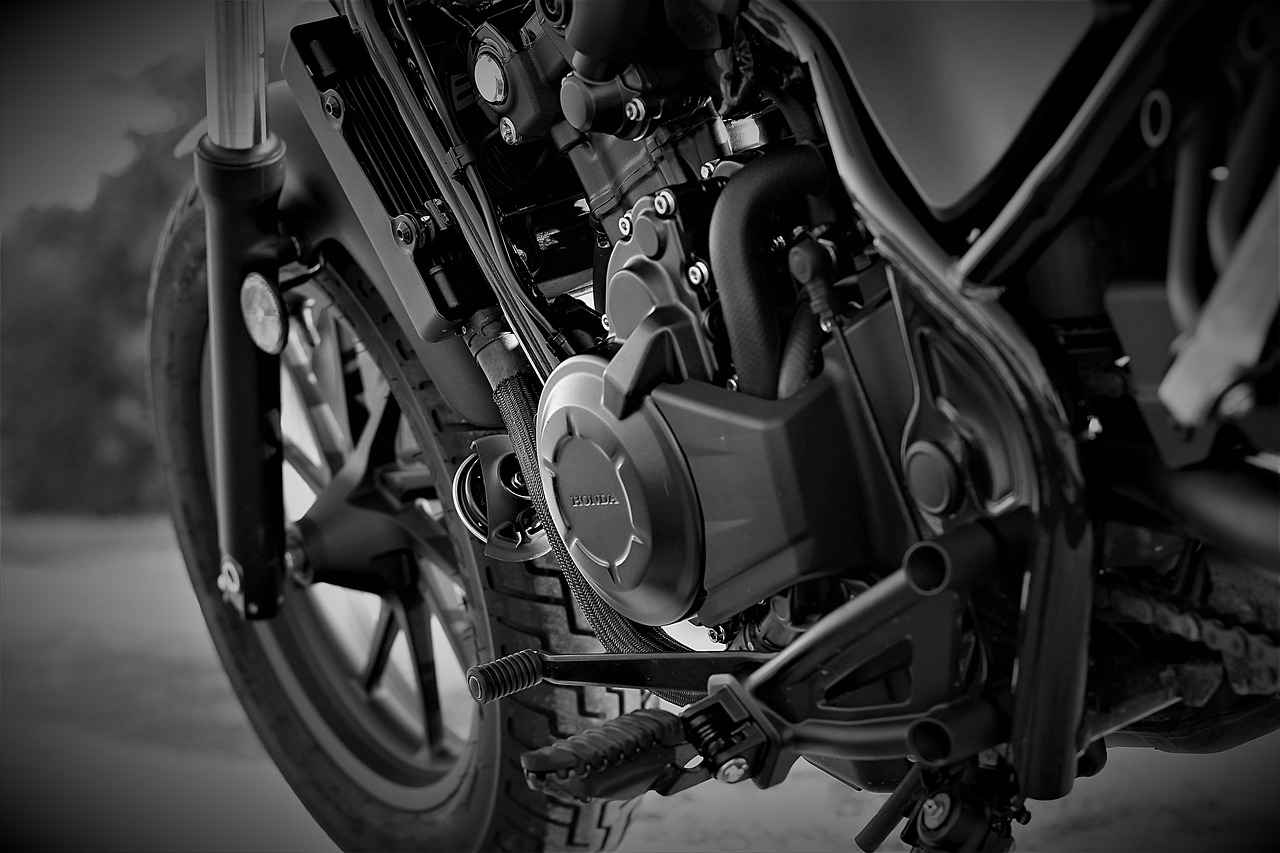
Third Generation: 1984-1987
The third generation of the Honda Civic, produced from 1984 to 1987, marked a pivotal moment in the model’s evolution. With a sportier design and enhanced performance features, this generation was strategically crafted to attract a younger demographic. Honda recognized the shifting preferences of consumers who sought not only practicality but also style and excitement in their vehicles.
One of the standout features of this generation was its aggressive styling. The Civic adopted a more aerodynamic shape, characterized by sleek lines and a compact profile that distinguished it from its predecessors. This design approach was not merely aesthetic; it also contributed to improved fuel efficiency and performance. The introduction of the Civic Si model further emphasized this sporty direction, offering a performance-oriented option that appealed to driving enthusiasts.
In terms of performance enhancements, the third generation boasted a range of engine options, including a more powerful 1.5-liter engine that provided a spirited driving experience. The integration of advanced suspension systems improved handling, making the Civic not only fun to drive but also a practical choice for everyday use. This combination of style and performance resonated with younger buyers, who were looking for a vehicle that could keep up with their active lifestyles.
Moreover, Honda’s commitment to environmental sustainability was evident in this generation. The Civic models were designed to meet stricter emissions standards, reflecting the brand’s dedication to producing fuel-efficient vehicles. This focus on eco-friendliness, combined with the sporty design, positioned the Civic as a forward-thinking option in a competitive market.
The third generation of the Honda Civic successfully balanced style and practicality, making it a beloved choice among a new generation of drivers. Its innovative features and sporty appeal laid the groundwork for future models, ensuring that the Civic would remain a staple in the automotive landscape for years to come.
Sport Models and Variants
The Honda Civic has long been recognized for its versatility and performance, but it was the introduction of the Civic Si model that truly transformed its identity within the automotive landscape. Launched during the third generation, the Civic Si was designed to cater to a growing demographic of driving enthusiasts who sought more than just a reliable compact car; they desired a vehicle that could deliver an exhilarating driving experience.
With its sport-tuned suspension and a more powerful engine, the Civic Si quickly became a favorite among performance aficionados. The model featured a spirited 1.6-liter DOHC engine that produced an impressive amount of horsepower for its class, allowing it to stand out in a crowded market. This performance-oriented variant not only enhanced the Civic’s appeal but also established it as a serious contender in the compact sports car segment.
In addition to its robust performance, the Civic Si introduced several styling elements that set it apart from its more conventional counterparts. Features such as a unique front grille, sportier body kit, and distinctive alloy wheels contributed to its aggressive aesthetic, attracting younger buyers looking for a vehicle that reflected their lifestyle.
The Civic Si also emphasized driving dynamics, offering features like a close-ratio manual transmission that provided a more engaging driving experience. This focus on performance and handling resonated with enthusiasts, solidifying the Civic Si’s reputation as a fun-to-drive option within the Civic lineup.
As the years progressed, the Civic Si continued to evolve, incorporating advancements in technology and design while maintaining its core performance attributes. With each new generation, Honda refined the Si’s capabilities, ensuring it remained relevant and competitive in an ever-changing automotive landscape.
Today, the Civic Si stands as a testament to Honda’s commitment to performance and innovation, appealing to a new generation of enthusiasts while honoring its rich legacy. The introduction of this model not only broadened the Civic’s appeal but also helped cultivate a passionate community of drivers who appreciate the blend of practicality and performance.
Environmental Considerations
The Honda Civic has consistently demonstrated a commitment to innovation and sustainability throughout its generations. In the third generation, which spanned from 1984 to 1987, Honda took significant strides in addressing environmental concerns. This era marked a pivotal moment in the automotive industry as consumers began to prioritize fuel efficiency and lower emissions due to growing awareness of environmental issues.
During this generation, Honda introduced several fuel-efficient models that not only met but often exceeded the stricter emissions standards being established globally. The engineering team focused on optimizing engine performance while minimizing environmental impact. By employing lightweight materials and refining fuel injection systems, Honda was able to enhance the Civic’s overall efficiency.
In addition to improving fuel economy, Honda’s commitment to sustainability was evident in their development of technologies aimed at reducing harmful emissions. The introduction of catalytic converters in their vehicles significantly lowered the levels of pollutants released into the atmosphere, showcasing Honda’s proactive approach to environmental stewardship.
Furthermore, Honda’s focus on sustainability extended beyond just emissions. The company began exploring alternative fuel options and investing in research for hybrid technology, laying the groundwork for future models that would further reduce the carbon footprint of their vehicles. This forward-thinking approach positioned Honda as a leader in the movement towards greener transportation solutions.
As the automotive landscape continues to evolve, Honda remains dedicated to enhancing the Civic’s environmental performance. The ongoing development of electric and hybrid models underlines their commitment to sustainability, ensuring that the Civic not only meets the demands of modern consumers but also contributes positively to the planet.
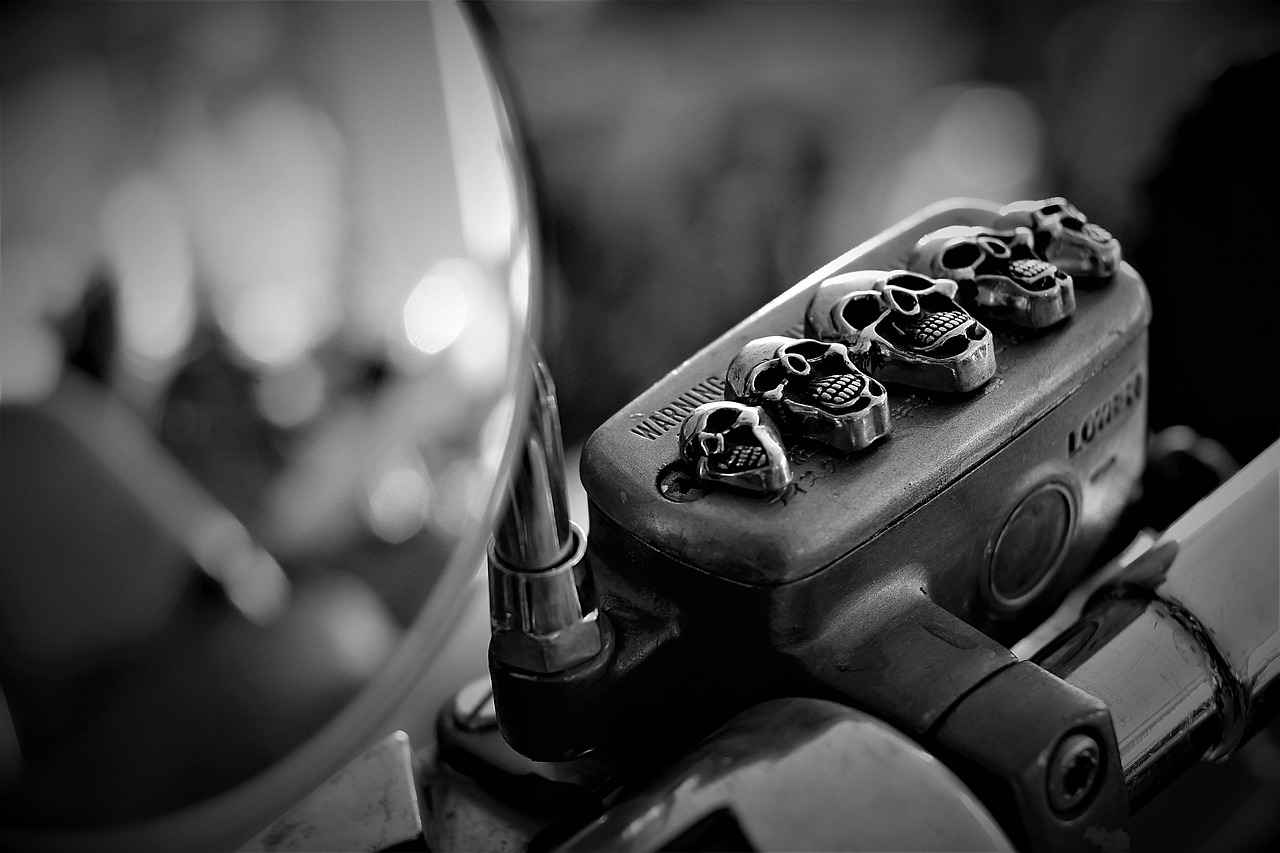
Fourth Generation: 1988-1991
The fourth generation of the Honda Civic, produced from 1988 to 1991, is often celebrated for its remarkable blend of style, performance, and practicality. This era marked a significant turning point in the Civic’s legacy, as it introduced the highly sought-after Civic hatchback, a model that quickly gained a dedicated following among car enthusiasts.
One of the standout features of the fourth generation was its iconic design. The hatchback variant boasted a sporty and compact silhouette, characterized by sharp lines and a modern aesthetic that appealed to a younger audience. This design not only enhanced its visual appeal but also contributed to its aerodynamics, improving fuel efficiency and performance.
Under the hood, the fourth-generation Civic offered a range of engine options, including a 1.6-liter engine that provided a perfect balance of power and efficiency. Enhanced suspension systems and precise steering made for an engaging driving experience, further solidifying the Civic’s reputation as a fun-to-drive compact car.
The Civic hatchback became a cultural icon during this period, frequently appearing in movies, music videos, and car shows. Its popularity was not just limited to its looks; it was also a canvas for customization. Enthusiasts embraced the Civic for its tuning potential, making it a staple in the tuning community.
Moreover, the fourth generation was pivotal in establishing Honda’s commitment to quality and reliability. Consumers began to associate the Civic with not only sporty performance but also with long-lasting durability. This reputation played a crucial role in the Civic’s continued success in the North American market.
In summary, the fourth generation of the Honda Civic is remembered as a transformative era in the model’s history, where design, performance, and cultural significance converged. The introduction of the Civic hatchback during this time left an indelible mark on automotive enthusiasts, ensuring its place in the hearts of many.
Performance Upgrades
The fourth generation of the Honda Civic, produced from 1988 to 1991, marked a significant turning point in the compact car segment. With a keen focus on enhancing both performance and handling, Honda implemented several upgrades that set this generation apart from its predecessors. The introduction of a sophisticated suspension system and meticulous engine tuning played a crucial role in shaping the driving experience.
One of the most notable enhancements was the incorporation of an independent suspension system, which improved ride quality and stability during cornering. This design not only allowed for better handling but also contributed to a more comfortable driving experience, making the Civic a popular choice among those seeking both practicality and sportiness.
In addition to the suspension upgrades, Honda focused on engine performance. The fourth-generation Civic featured refined engine options, including the introduction of the DOHC (Dual Overhead Cam) engine, which offered increased power and efficiency. This engine tuning not only enhanced acceleration but also improved overall fuel economy, appealing to a broader range of consumers.
| Engine Type | Power Output | Fuel Efficiency |
|---|---|---|
| 1.5L SOHC | 92 hp | 30 mpg |
| 1.6L DOHC | 108 hp | 28 mpg |
These upgrades made the fourth-generation Civic not only a competitive option in the compact car market but also a favorite among driving enthusiasts. Its blend of sporty performance, reliability, and efficiency solidified its reputation and contributed to its iconic status in automotive history. As a result, the Civic became a staple in car culture, frequently referenced in media and embraced by a diverse audience.
Civic’s Cultural Impact
The fourth generation of the Honda Civic, produced between 1988 and 1991, holds a significant place in automotive history, not just for its engineering prowess but also for its profound cultural impact. This generation became synonymous with youth culture, as it captured the spirit of a vibrant, dynamic era. Its design and performance resonated with a generation eager for self-expression and individuality.
One of the most notable aspects of the fourth-generation Civic was its iconic styling. The hatchback variant, in particular, gained a cult following due to its sporty appearance and versatility. This model was frequently featured in films and television shows of the time, further solidifying its status as a cultural icon. Movies like Fast Times at Ridgemont High and The Fast and the Furious showcased the Civic, embedding it in the fabric of popular culture.
Moreover, the Civic’s presence in the tuning community cannot be overlooked. Enthusiasts began to modify their Civics, enhancing performance and aesthetics, which contributed to the car’s reputation as a canvas for personal expression. Car meets and races became commonplace, with the Civic often taking center stage, symbolizing the burgeoning import car scene in the United States.
The fourth-generation Civic also played a role in shifting perceptions about compact cars. It demonstrated that smaller vehicles could offer not only fuel efficiency but also style and performance, challenging the dominance of larger vehicles in the market. This shift was pivotal in changing consumer attitudes and preferences, paving the way for future generations of compact cars.
In summary, the fourth-generation Honda Civic transcended its role as merely a vehicle; it became a powerful symbol of a generation, influencing automotive culture and remaining a beloved choice among enthusiasts. Its legacy continues to inspire new generations of car lovers, ensuring that the Civic remains a relevant and cherished name in the automotive landscape.

Fifth Generation: 1992-1995
The fifth generation of the Honda Civic, produced from 1992 to 1995, marked a pivotal moment in the model’s evolution, focusing on enhancing both design and performance. This generation was characterized by a commitment to comfort and technology, which broadened its appeal to a diverse range of consumers.
One of the most notable aspects of this generation was its refined exterior design. The Civic adopted a more aerodynamic shape, with smoother lines and a contemporary aesthetic that appealed to both young drivers and families. This shift not only improved the vehicle’s visual appeal but also contributed to better fuel efficiency, aligning with the growing consumer demand for economical cars.
Inside, the fifth-generation Civic prioritized passenger comfort by utilizing higher-quality materials and a more ergonomic layout. The spacious cabin offered ample legroom and headroom, making it a practical choice for daily commuting and long drives alike. Additionally, the integration of advanced features such as power windows, air conditioning, and a more sophisticated audio system set new benchmarks for compact cars of the era.
Safety was another critical focus during this generation. The introduction of airbags and anti-lock braking systems represented significant advancements, addressing the increasing consumer concerns regarding vehicle safety. These innovations not only enhanced the Civic’s reputation but also set a standard that competitors would strive to meet.
Overall, the fifth generation of the Honda Civic successfully combined style, comfort, and technology, making it a well-rounded choice for a broader audience. The enhancements made during this period laid the groundwork for the Civic’s continued success in subsequent generations, solidifying its status as a beloved compact car in the automotive landscape.
Interior Comfort and Features
The Honda Civic has long been recognized for its balance of performance, reliability, and comfort. In its fifth generation, which spanned from 1992 to 1995, the Civic made significant strides in enhancing the overall driving experience, particularly in terms of interior comfort and advanced features.
This generation was pivotal in shifting consumer expectations regarding compact cars. Honda understood that drivers were not just looking for fuel efficiency; they also desired a more luxurious and comfortable ride. As a result, the fifth-generation Civic incorporated high-quality interior materials that elevated the look and feel of the cabin. Soft-touch surfaces, improved seating ergonomics, and a quieter ride transformed the Civic into a more inviting space for both drivers and passengers.
Moreover, this generation introduced a variety of advanced features that were ahead of their time. Options such as power windows, central locking, and upgraded audio systems became available, catering to a more tech-savvy audience. These innovations not only enhanced comfort but also reflected a growing trend towards integrating technology into everyday driving experiences.
- Spacious Interior: The design of the fifth-generation Civic maximized interior space, providing ample legroom and headroom for passengers.
- Quality Materials: The use of premium materials throughout the cabin contributed to a more upscale ambiance.
- Advanced Features: Features like air conditioning and improved audio systems set new standards for compact cars.
In summary, the fifth generation of the Honda Civic not only prioritized passenger comfort with its high-quality materials and advanced features but also laid the groundwork for future models to follow suit. By setting these new standards, Honda solidified the Civic’s reputation as a leader in the compact car segment, appealing to a broader audience that values both comfort and functionality.
Safety Innovations
The evolution of automotive safety has been a pivotal aspect of vehicle design and engineering, especially in response to increasing consumer concerns. Among the most significant advancements in this domain are the introduction of airbags and anti-lock braking systems (ABS), which have transformed the landscape of vehicular safety.
Airbags became a standard feature in vehicles during the late 1980s and early 1990s. Designed to deploy during a collision, they provide a crucial cushion for occupants, significantly reducing the risk of serious injuries. This innovation addressed the alarming statistics related to road safety, as the National Highway Traffic Safety Administration (NHTSA) reported that airbags could reduce fatal injuries by as much as 30% in frontal crashes. As a result, consumers began to prioritize vehicles equipped with airbags, leading manufacturers to integrate them into their designs.
Similarly, the implementation of anti-lock braking systems revolutionized how vehicles respond during emergency braking situations. ABS prevents the wheels from locking up, allowing drivers to maintain steering control while braking hard. This technology has been shown to reduce stopping distances on slippery surfaces and significantly decrease the likelihood of losing control during a panic stop. According to various studies, vehicles equipped with ABS are involved in fewer accidents, which has only increased public demand for such safety features.
The combination of airbags and ABS not only reflects a commitment to enhancing driver and passenger safety but also demonstrates how manufacturers have adapted to consumer demands for safer vehicles. As these innovations became more widespread, they played a crucial role in shaping consumer perceptions of safety, leading to a more informed buying public that values these features highly.
In conclusion, the introduction of airbags and anti-lock braking systems represents a significant milestone in automotive safety. These innovations have not only saved lives but have also influenced consumer choices, making safety a top priority in vehicle design and marketing.

Sixth Generation: 1996-2000
The sixth generation of the Honda Civic, produced from 1996 to 2000, marked a pivotal moment in the model’s history. This generation was characterized by a distinct sporty aesthetic that resonated with a younger audience, while simultaneously delivering impressive performance metrics. As automotive enthusiasts sought vehicles that combined both style and functionality, the sixth-generation Civic stepped up to the challenge.
Visually, the sixth-generation Civic showcased a more aggressive stance, with sharper lines and a lower profile, which contributed to its dynamic presence on the road. The introduction of features such as wider wheel arches and a sportier front fascia enhanced its appeal to drivers looking for a stylish compact car. The hatchback and sedan variants provided options to cater to diverse consumer preferences.
Under the hood, this generation introduced several performance-oriented variants, including the acclaimed Civic Si and the Civic Type R. These models featured upgraded engines and sport-tuned suspensions, delivering a thrilling driving experience. The availability of a VTEC engine option further emphasized Honda’s commitment to performance, allowing drivers to enjoy both power and efficiency.
The sixth generation was also notable for its integration of advanced technology. Features such as improved audio systems, optional navigation, and enhanced safety measures became available, aligning with the expectations of modern drivers. These technological advancements not only improved the driving experience but also contributed to the Civic’s reputation as a well-rounded vehicle.
The sixth-generation Honda Civic successfully captured the attention of a new generation of drivers, establishing itself as a benchmark in the compact car segment. Its combination of sporty design, performance enhancements, and technological integrations ensured that it stood out in a competitive market. This generation laid the groundwork for future Civics, influencing design and performance standards in the years to come.
Performance Variants: Civic Type R
The Civic Type R has become synonymous with high performance and exhilarating driving experiences within the Honda lineup. Since its inception, this variant has consistently pushed the boundaries of what a compact car can achieve, showcasing Honda’s dedication to performance engineering. The introduction of the Civic Type R marked a significant milestone in the evolution of the Civic, transforming it from a reliable commuter vehicle into a track-ready powerhouse.
One of the standout features of the Civic Type R is its powerful engine. Equipped with a turbocharged 2.0-liter inline-four engine, it delivers an impressive output of over 300 horsepower. This robust performance is complemented by a finely tuned sport suspension system, which enhances handling and stability during high-speed maneuvers. Coupled with a six-speed manual transmission, the driving experience is both engaging and responsive, appealing to enthusiasts who crave a connection with the road.
In addition to its performance capabilities, the Civic Type R boasts a distinctive exterior design that sets it apart from its siblings. With aggressive styling elements such as a prominent front splitter, large rear wing, and unique alloy wheels, it exudes a sporty presence that commands attention. Inside, the cabin is designed with the driver in mind, featuring racing-inspired seats and an intuitive layout that enhances the overall driving experience.
The Civic Type R is not just about raw power; it also incorporates advanced technology to improve performance. Features such as adaptive dampers allow drivers to customize their driving experience, while a sophisticated multi-link rear suspension ensures optimal traction and stability. These innovations reflect Honda’s commitment to creating a well-rounded performance vehicle that excels both on the road and the track.
In summary, the Civic Type R stands as a testament to Honda’s engineering prowess and dedication to performance. With its powerful engine, advanced suspension system, and striking design, it continues to captivate car enthusiasts and redefine the standards of compact performance.
Technological Integration
The sixth generation of the Honda Civic, produced from 1996 to 2000, marked a significant turning point in automotive technology. This era was characterized by a shift towards advanced technological integration, which not only enhanced the driving experience but also catered to the evolving needs of consumers.
One of the most notable advancements during this generation was the introduction of improved audio systems. These systems offered superior sound quality, allowing drivers and passengers to enjoy their favorite music with clarity. Additionally, the inclusion of features such as CD players and later, MP3 compatibility, ensured that the Civic stayed relevant in a rapidly changing digital landscape.
Furthermore, the sixth generation also embraced the introduction of navigation options. While GPS technology was still in its infancy, Honda took a pioneering step by offering models equipped with rudimentary navigation systems. This feature not only provided convenience but also reflected the brand’s commitment to enhancing user experience through technology.
| Technological Features | Description |
|---|---|
| Audio Systems | High-quality sound systems with CD and MP3 compatibility. |
| Navigation Options | Early GPS systems providing route guidance. |
| Safety Features | Incorporation of airbags and anti-lock braking systems. |
In addition to these features, the sixth generation Honda Civic also focused on enhanced safety technologies. The introduction of airbags and anti-lock braking systems marked a significant leap forward, addressing growing consumer concerns regarding vehicle safety. These innovations not only improved driver and passenger protection but also set a new standard for safety in compact cars.
Overall, the sixth generation of the Honda Civic is a prime example of how can transform a vehicle. By prioritizing both entertainment and safety, Honda successfully catered to the demands of a diverse customer base, ensuring the Civic remained a popular choice among drivers.

Seventh Generation: 2001-2005
The seventh generation of the Honda Civic, produced between 2001 and 2005, marked a significant evolution in the model’s design and functionality. This generation was characterized by a strong emphasis on enhancing the practicality and comfort of the vehicle, making it a popular choice among consumers seeking a reliable compact car.
One of the most notable changes was the increase in interior space. The seventh-generation Civic offered a more spacious cabin, allowing for greater comfort for both the driver and passengers. The layout was thoughtfully designed to maximize usability, with ample legroom and headroom that set a new standard in the compact car segment.
In addition to the interior upgrades, the exterior design underwent a refinement that appealed to a broader audience. The sleek lines and modern aesthetic gave the Civic a more sophisticated look, distancing it from its predecessors while maintaining its identity. This fresh approach to design helped Honda attract younger buyers looking for style without sacrificing functionality.
| Key Features | Description |
|---|---|
| Interior Comfort | Spacious cabin with improved materials and ergonomic seating. |
| Exterior Design | Sleek and modern styling elements that enhanced visual appeal. |
| Hybrid Technology | Introduction of the Civic Hybrid, showcasing eco-friendly innovation. |
| Market Reception | Strong sales performance, solidifying Civic’s reputation in North America. |
The introduction of the Civic Hybrid during this generation was a pivotal moment for Honda. This model not only highlighted Honda’s commitment to environmentally friendly technologies but also appealed to a growing demographic concerned with sustainability. The hybrid variant provided an alternative for consumers looking to reduce their carbon footprint without compromising on the driving experience.
Overall, the seventh generation of the Honda Civic successfully combined practicality, comfort, and innovation, setting a benchmark for future models. Its blend of enhanced interior space, refined exterior design, and the introduction of hybrid technology contributed to its strong market performance, ensuring its place as a top choice in the competitive compact car market.
Hybrid Technology Introduction
The introduction of hybrid technology into the Honda Civic lineup marked a significant milestone in the automotive industry, reflecting a growing trend towards sustainability and eco-friendliness. The Civic Hybrid, launched in 2001, was Honda’s first foray into the hybrid market, demonstrating the brand’s commitment to reducing environmental impact while maintaining the performance and reliability that consumers had come to expect.
This innovative vehicle combined a traditional gasoline engine with an electric motor, allowing for improved fuel efficiency and reduced emissions. The Civic Hybrid was designed to appeal to environmentally conscious consumers who sought a practical yet efficient vehicle without sacrificing performance. With its fuel economy ratings often exceeding those of conventional gasoline-powered vehicles, it quickly gained popularity among buyers looking for sustainable alternatives.
One of the standout features of the Civic Hybrid was its regenerative braking system, which captured energy typically lost during braking and redirected it to recharge the vehicle’s battery. This technology not only enhanced fuel efficiency but also contributed to a smoother driving experience, making the Civic Hybrid a practical choice for daily commuters.
Furthermore, Honda’s commitment to hybrid technology extended beyond just the Civic model. The company invested heavily in research and development to improve battery technology and overall vehicle performance. This dedication to innovation ensured that the Civic Hybrid remained competitive in an increasingly crowded hybrid market, appealing to a broad spectrum of consumers.
As the automotive landscape continues to evolve with the rise of electric vehicles, Honda’s early adoption of hybrid technology through the Civic has paved the way for future advancements. The Civic Hybrid not only established Honda as a leader in eco-friendly vehicles but also set a precedent for subsequent generations of Civics, which would continue to embrace sustainable practices and technologies.
In summary, the launch of the Civic Hybrid was a pivotal moment for Honda, showcasing its commitment to environmentally friendly vehicles and solidifying the Civic’s place in the hybrid market. This initiative not only catered to the needs of consumers but also aligned with global efforts to promote sustainability in the automotive industry.
Market Performance and Sales
The Honda Civic has consistently demonstrated remarkable market performance throughout its history, particularly during the seventh generation, which spanned from 2001 to 2005. This era was pivotal for the Civic, as it not only solidified its reputation but also significantly enhanced its appeal among consumers in the compact car segment.
During this generation, the Civic experienced a surge in sales figures, attributed to several key factors:
- Increased Practicality: The seventh generation featured a more spacious interior, allowing for greater comfort and utility, which resonated well with families and young professionals alike.
- Fuel Efficiency: With rising fuel prices, the Civic’s emphasis on fuel economy made it a top choice for cost-conscious consumers. Many models achieved impressive mileage, making them economically viable options.
- Hybrid Introduction: The launch of the Civic Hybrid marked Honda’s commitment to environmentally friendly vehicles, attracting a growing demographic interested in sustainability.
- Reliability and Reputation: Honda’s longstanding reputation for producing reliable vehicles played a crucial role in consumer trust, further boosting sales during this period.
As a result of these factors, the Civic not only maintained but also strengthened its position as a leading choice among compact cars in North America. The combination of innovative design, practical features, and a focus on fuel efficiency made the seventh generation a standout. This success laid the groundwork for subsequent generations, allowing the Civic to adapt and thrive in an ever-evolving automotive landscape.
In summary, the seventh generation of the Honda Civic was a defining period that showcased the model’s ability to meet consumer needs while reinforcing its status as a market leader in the compact car segment.

Eighth Generation: 2006-2011
The eighth generation of the Honda Civic, produced from 2006 to 2011, marked a significant turning point in the model’s history. This iteration showcased a bold redesign that not only emphasized a more aggressive stance but also incorporated advanced performance capabilities, making it appealing to a broader audience than ever before.
One of the standout features of this generation was its sporty design elements. The Civic adopted a sloping roofline and a dynamic front fascia, which contributed to its aerodynamic efficiency and modern aesthetic. These changes were specifically aimed at attracting younger buyers who sought a stylish yet practical compact car.
In terms of performance, the eighth generation introduced several enhancements that elevated the driving experience. The availability of a 2.0-liter i-VTEC engine provided a perfect blend of power and fuel efficiency, appealing to both enthusiasts and everyday drivers. Additionally, the introduction of the Civic Si variant further solidified its sporty reputation, offering a more powerful engine and sport-tuned suspension for those craving an exhilarating ride.
Technological advancements were another highlight of this generation. The Civic was equipped with features such as Bluetooth connectivity and an advanced audio system, enhancing the overall driving experience. Moreover, safety was prioritized with the inclusion of standard features like side airbags and anti-lock braking systems, addressing the growing consumer demand for security in vehicles.
Overall, the eighth generation of the Honda Civic successfully combined style, performance, and technology, making it a standout choice in the compact car market. Its ability to resonate with a diverse audience ensured that it remained a popular option for years to come.
Sporty Design Elements
The Honda Civic has consistently evolved to meet the demands of its diverse audience, particularly the younger demographic seeking a blend of style and performance. The eighth generation of the Civic, produced from 2006 to 2011, exemplified this shift with its that captured the attention of a new generation of drivers.
This generation was characterized by a distinctive sloping roofline that not only contributed to the vehicle’s aerodynamic efficiency but also enhanced its visual appeal. The aggressive front fascia featured bold lines and a prominent grille, giving the Civic a sporty and dynamic appearance that resonated with younger buyers looking for a compact car that stood out on the road.
In addition to its striking aesthetics, the eighth generation Civic was equipped with advanced performance features. The introduction of a sport-tuned suspension and a variety of engine options, including a fuel-efficient yet powerful 2.0-liter engine, allowed for an engaging driving experience. These enhancements made the Civic not only visually appealing but also fun to drive, thereby attracting enthusiasts who valued both style and performance.
Moreover, the interior design of this generation was equally impressive, featuring a modern layout with high-quality materials and user-friendly technology. The integration of advanced audio systems and connectivity options catered to the tech-savvy younger audience, further solidifying the Civic’s position as a top choice among compact cars.
Overall, the sporty design elements of the eighth generation Honda Civic played a crucial role in its market success, appealing to younger buyers who desired a stylish and functional compact car. The combination of eye-catching aesthetics, performance enhancements, and modern technology ensured that the Civic remained a relevant and desirable option in an increasingly competitive automotive landscape.
Technological Enhancements
The evolution of the Honda Civic has been marked by a series of that not only improved performance but also significantly elevated the overall driving experience. As the automotive industry faced increasing demands for efficiency and safety, Honda responded with innovations that catered to both consumer preferences and regulatory requirements.
One of the most notable advancements was in fuel efficiency. Each generation of the Civic has seen improvements in engine technology, leading to better mileage without compromising power. For instance, the introduction of turbocharged engines in the tenth generation provided drivers with a balance of performance and efficiency, allowing for a more engaging driving experience while minimizing fuel consumption.
In addition to fuel efficiency, Honda has placed a strong emphasis on safety features. The integration of advanced safety technologies has become a hallmark of the Civic, with features such as adaptive cruise control, lane-keeping assist, and collision mitigation braking systems. These innovations not only enhance the safety of the vehicle but also provide peace of mind to drivers and passengers alike.
The infotainment systems in newer models have also evolved significantly. The introduction of touchscreen interfaces, smartphone integration, and advanced audio systems has transformed the way drivers interact with their vehicles. This focus on technology ensures that drivers remain connected while on the road, making the Civic a practical choice for modern consumers.
Moreover, the commitment to environmental sustainability is reflected in the Civic’s hybrid and electric models. Honda’s efforts to reduce emissions and promote eco-friendly driving options demonstrate a forward-thinking approach, aligning with global trends towards sustainability.
In summary, the Honda Civic’s technological enhancements have not only improved fuel efficiency and safety but have also redefined the driving experience, making it a compelling choice in the competitive compact car market.

Ninth Generation: 2012-2015
The ninth generation of the Honda Civic, produced from 2012 to 2015, marked a pivotal moment in the model’s long-standing history. This generation was designed with a clear objective: to refine the Civic’s design and performance, effectively addressing the criticisms that had been directed at its predecessor while simultaneously upholding the core values that had made the Civic a favorite among drivers.
One of the most notable changes in the ninth generation was the revamped exterior design. Honda aimed to create a more sophisticated and modern look, incorporating sleeker lines and a more aggressive front fascia. These design choices not only enhanced the vehicle’s aesthetic appeal but also improved aerodynamics, contributing to better fuel efficiency.
In addition to visual updates, significant attention was given to the performance of the ninth-generation Civic. Honda introduced improved suspension systems and refined engine options, which resulted in a more responsive and enjoyable driving experience. The Civic was equipped with a 1.8-liter four-cylinder engine as standard, with a 2.4-liter engine available in sportier trims, offering a balance of power and efficiency.
Honda actively sought consumer feedback during the development of the ninth generation. This input led to various adjustments, including the redesign of interior features for enhanced comfort and usability. The interior boasted higher-quality materials and user-friendly technology, such as an upgraded infotainment system, making it a more appealing choice for a broader audience.
Fuel efficiency remained a priority for Honda during this generation. The ninth-generation Civic achieved impressive mileage ratings, with some models exceeding 40 miles per gallon on the highway. This focus on efficiency resonated well with consumers looking for economical options in a time of rising fuel prices.
Overall, the ninth generation of the Honda Civic successfully balanced design, performance, and consumer needs. By addressing previous criticisms and enhancing its core attributes, Honda ensured that the Civic remained a competitive player in the compact car market, appealing to both loyal fans and new buyers alike.
Consumer Feedback and Adjustments
The Honda Civic has long been a favorite among drivers, praised for its reliability, fuel efficiency, and versatility. As consumer preferences evolved, Honda recognized the need to adapt its flagship model to stay relevant in a competitive market. One of the most significant aspects of this evolution was Honda’s commitment to listening to consumer feedback and making necessary adjustments to the Civic’s design and performance.
Throughout its generations, Honda has consistently sought input from its customers, using surveys, focus groups, and market analysis to understand their desires and concerns. As a result, the Civic has undergone numerous enhancements that reflect these insights. For instance, after receiving feedback regarding interior space and comfort, Honda made significant improvements in subsequent models, offering more spacious cabins and higher-quality materials.
In terms of performance, Honda has also made notable adjustments. The introduction of turbocharged engines in recent generations was a direct response to consumer demand for more power without sacrificing fuel efficiency. This change not only enhanced the driving experience but also positioned the Civic as a more competitive option against rivals in the compact car segment.
| Model Year | Key Adjustments |
|---|---|
| 2012-2015 | Design tweaks and performance enhancements based on consumer feedback |
| 2016-2021 | Introduction of turbocharged engines for better performance |
| 2022-Present | Focus on electric and hybrid technology to meet environmental concerns |
Moreover, Honda’s responsiveness to criticism has also led to enhancements in safety features. With growing consumer awareness regarding vehicle safety, Honda has integrated advanced safety technologies across its models, ensuring that the Civic remains a top choice for families and safety-conscious drivers.
By continually refining the Honda Civic based on consumer feedback, Honda has not only maintained the model’s popularity but has also solidified its reputation as a brand that values its customers. This dedication to improvement ensures that the Civic will continue to thrive in an ever-changing automotive landscape.
Fuel Efficiency Improvements
The Honda Civic has long been recognized for its commitment to fuel efficiency, particularly in its ninth generation (2012-2015). This era marked a pivotal shift in automotive design, as manufacturers began to prioritize mileage in response to rising fuel prices and growing environmental concerns. The Civic’s various models during this generation achieved impressive mileage figures, making them particularly appealing to cost-conscious consumers who sought economical yet reliable transportation.
In an era where fuel economy became a primary consideration for many drivers, Honda implemented several key innovations. These advancements included the introduction of more efficient engines, aerodynamic designs, and lightweight materials, all contributing to the Civic’s overall performance. The ninth generation models boasted an impressive range of mileage, often exceeding 30 miles per gallon in city driving and reaching upwards of 39 miles per gallon on the highway, depending on the specific configuration.
| Model | City MPG | Highway MPG |
|---|---|---|
| Civic Sedan | 28 | 39 |
| Civic Coupe | 28 | 36 |
| Civic Hybrid | 44 | 47 |
Moreover, the Civic’s fuel efficiency improvements were not just about numbers; they also reflected a broader commitment to sustainability. Honda’s focus on reducing emissions and enhancing fuel economy aligned with global trends towards environmentally friendly vehicles. This shift not only helped reduce the carbon footprint but also positioned the Civic as a leader in the compact car segment.
As consumers became more aware of their environmental impact, the demand for fuel-efficient vehicles surged. The ninth generation Honda Civic successfully catered to this growing market, showcasing Honda’s ability to adapt to changing consumer preferences while maintaining the brand’s reputation for reliability and quality.
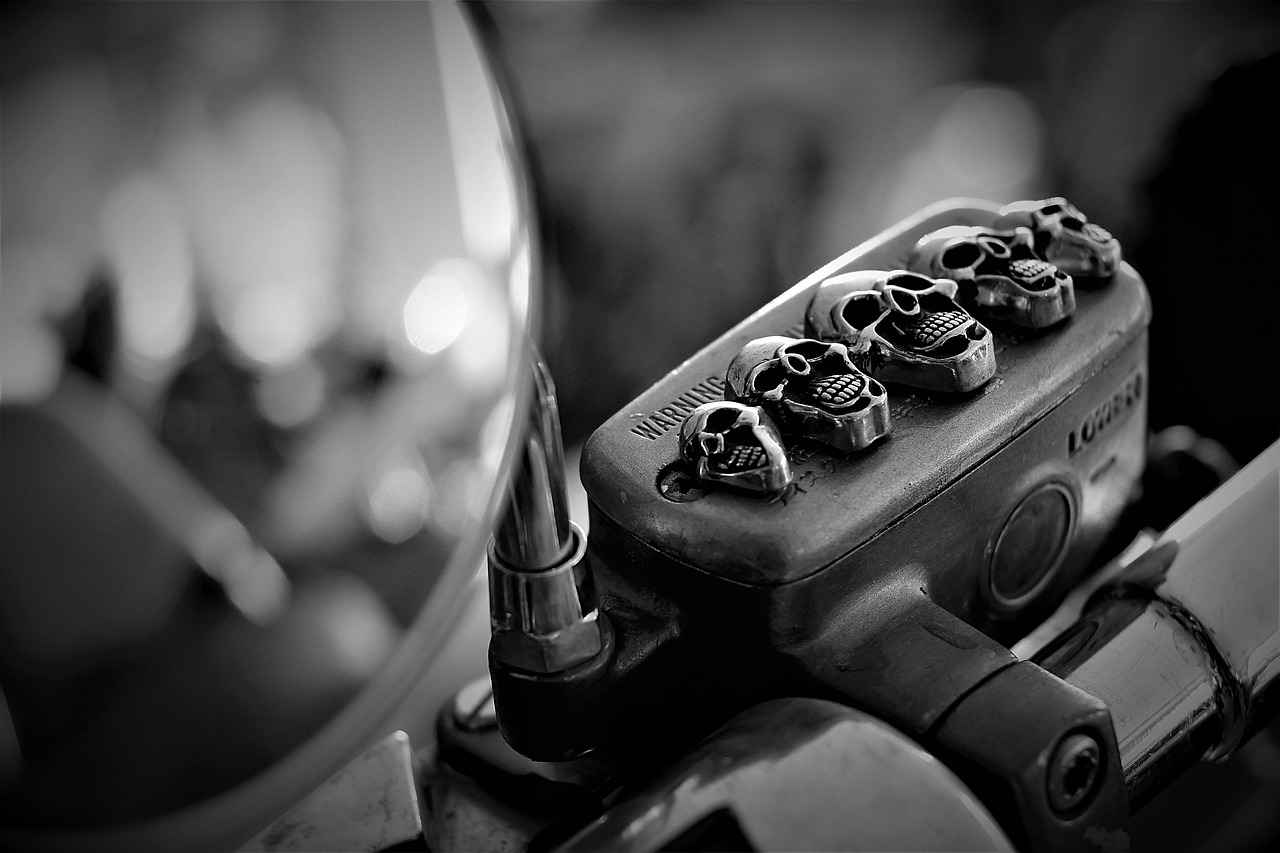
Tenth Generation: 2016-2021
The tenth generation of the Honda Civic, produced from 2016 to 2021, marked a pivotal moment in the evolution of this iconic compact car. With a focus on modern design, cutting-edge technology, and enhanced performance, this generation set new standards in the automotive industry, appealing to a diverse range of consumers.
The tenth generation showcased a complete redesign that emphasized a more aggressive and streamlined aesthetic. The exterior featured sharp lines and a bold front fascia, which contributed to its sporty look. Inside, the cabin was upgraded with high-quality materials and a user-friendly touchscreen interface, enhancing the overall driving experience. Additionally, the integration of advanced connectivity options, such as Apple CarPlay and Android Auto, catered to tech-savvy drivers.
One of the standout features of this generation was the introduction of turbocharged engines, which provided a remarkable balance between performance and fuel efficiency. The 1.5-liter turbocharged engine offered a spirited driving experience without compromising on mileage, making it a favorite among enthusiasts and eco-conscious consumers alike. The suspension was also refined, contributing to improved handling and ride comfort.
Safety remained a top priority for Honda during this generation. The Civic was equipped with an array of advanced safety features, including Honda Sensing, a suite of driver-assist technologies that included collision mitigation braking, lane-keeping assist, and adaptive cruise control. These features not only enhanced safety but also reinforced Honda’s reputation for reliability and innovation.
The tenth generation of the Honda Civic received widespread acclaim from both critics and consumers, winning numerous awards for its design and performance. Its ability to adapt to changing consumer preferences while maintaining its core values solidified its position as a leader in the compact car segment. This generation’s success further established the Civic as a benchmark for competitors, showcasing Honda’s commitment to excellence.
Redesign and Modern Features
The Honda Civic has been a benchmark in the compact car segment, and its tenth generation showcased a remarkable transformation that caught the attention of both enthusiasts and casual drivers alike. This redesign was not merely cosmetic; it represented a significant leap forward in both technology and design philosophy.
One of the most striking aspects of this redesign was the introduction of a sleek, modern aesthetic. The exterior featured bold lines and an aggressive stance, making the Civic not just a vehicle, but a statement on the road. The refined silhouette and sculpted bodywork contributed to improved aerodynamics, enhancing both performance and fuel efficiency.
Inside, the Civic was equipped with advanced features that set new standards for its class. The centerpiece of the interior was the touchscreen interface, which facilitated seamless interaction with various infotainment options. This user-friendly system allowed drivers to easily access navigation, music, and connectivity features, making every drive more enjoyable.
| Feature | Description |
|---|---|
| Touchscreen Interface | Intuitive controls for navigation and entertainment |
| Enhanced Connectivity | Support for Apple CarPlay and Android Auto |
| Safety Features | Advanced driver-assistance systems for improved safety |
Moreover, the enhanced connectivity options allowed drivers to stay connected on the go. With features like Apple CarPlay and Android Auto, users could integrate their smartphones into the vehicle’s system, providing access to apps, music, and hands-free calling.
The Civic’s redesign also included a comprehensive suite of safety technologies, such as adaptive cruise control and lane-keeping assist, which not only improved the driving experience but also prioritized the safety of both the driver and passengers.
In summary, the tenth generation Honda Civic’s redesign was a game-changer, blending a modern aesthetic with advanced technology and safety features, solidifying its place as a leader in the compact car market.
Performance and Driving Experience
The performance and driving experience of the Honda Civic have been significantly enhanced over the years, particularly with the introduction of turbocharged engines. These engines have revolutionized the compact car segment by offering a remarkable balance of power and fuel efficiency, catering to the diverse needs of consumers.
Turbocharged engines utilize forced induction to compress the intake air, allowing for more fuel to be burned in the combustion process. This results in a more powerful engine without increasing the engine size. For example, the latest Civic models feature a 1.5-liter turbocharged engine that delivers impressive horsepower while maintaining excellent fuel economy. This innovation has not only improved acceleration but also provided a more dynamic driving experience.
Moreover, the integration of turbocharged engines has allowed Honda to meet strict emission regulations while still delivering a thrilling ride. The balance between performance and environmental responsibility is crucial in today’s automotive landscape. Consumers are increasingly seeking vehicles that do not compromise on excitement while also being conscious of their carbon footprint.
Driving a turbocharged Civic offers a unique experience; the immediate throttle response and smooth power delivery create an engaging drive, whether in city traffic or on the highway. Additionally, advancements in suspension technology and chassis design further enhance the handling capabilities of these vehicles, making them not only fun to drive but also stable and comfortable.
In summary, the introduction of turbocharged engines has significantly transformed the Honda Civic’s performance and driving experience. By blending efficiency with performance, Honda has positioned itself as a leader in the compact car market, appealing to both enthusiasts and everyday drivers alike.
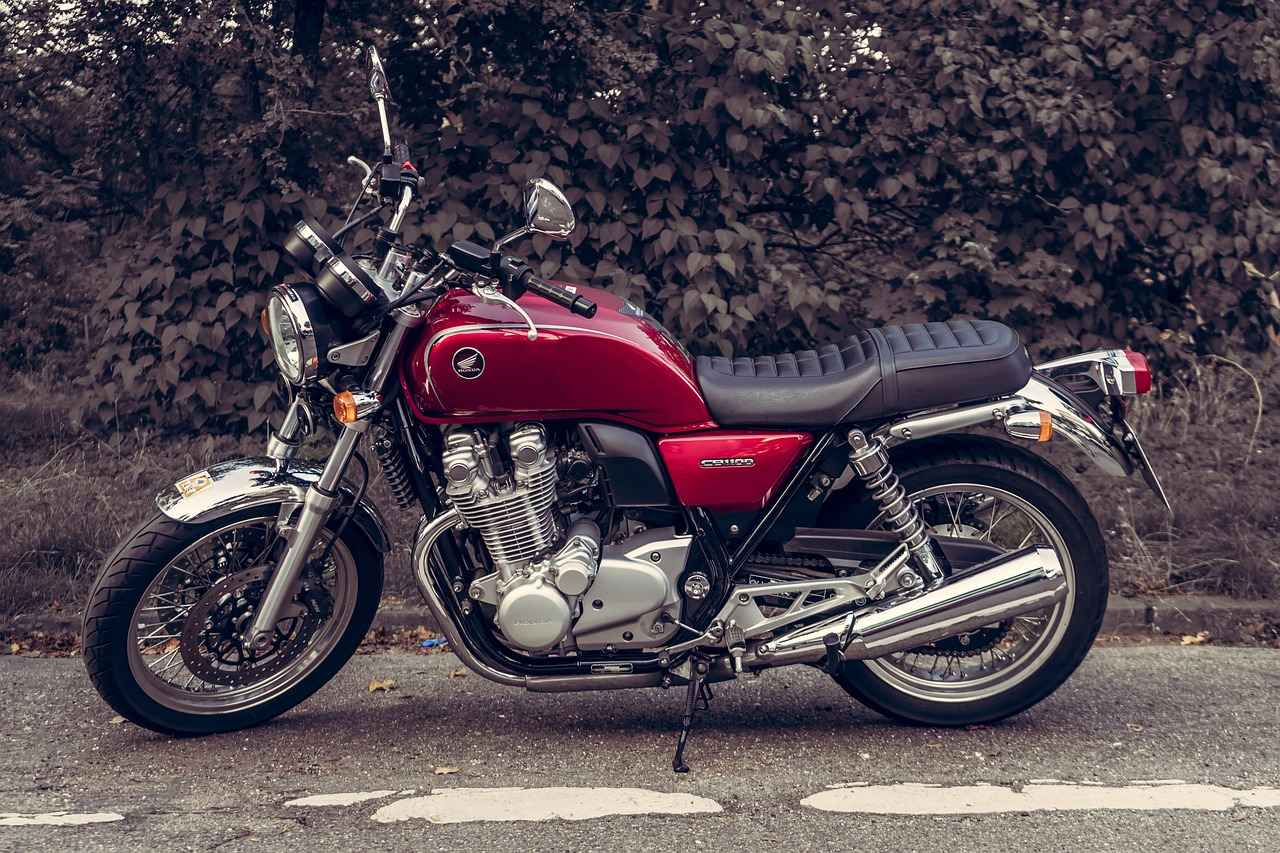
Eleventh Generation: 2022-Present
The eleventh generation of the Honda Civic, launched in 2022, marks a significant milestone in the model’s long history. As the automotive landscape shifts towards greater emphasis on sustainability, technology, and performance, Honda has adeptly adapted the Civic to meet these evolving demands, ensuring its relevance in a competitive market.
One of the most notable aspects of the eleventh generation is its focus on environmental responsibility. Honda has made strides in integrating hybrid and electric options within the Civic lineup. The introduction of these models reflects Honda’s commitment to reducing its carbon footprint while providing consumers with fuel-efficient alternatives. This shift not only aligns with global trends towards electrification but also resonates with environmentally-conscious buyers.
The eleventh generation Civic is equipped with cutting-edge technology designed to enhance the driving experience. Features such as a state-of-the-art infotainment system, advanced driver-assistance technologies, and improved connectivity options make this model a leader in its class. The integration of smartphone connectivity and navigation systems ensures that drivers remain connected and informed on the go, catering to the demands of modern lifestyles.
Performance remains a core focus for the latest Civic models. With refined engine options, including turbocharged variants, the eleventh generation promises a thrilling driving experience without compromising on efficiency. The sport-tuned suspension and enhanced handling characteristics provide a dynamic ride that appeals to both enthusiasts and everyday drivers alike.
As the automotive industry continues to evolve, the Honda Civic is poised to adapt to emerging trends. With a growing emphasis on autonomous driving technologies and further advancements in electric vehicle capabilities, Honda is committed to ensuring that the Civic remains at the forefront of innovation. This adaptability not only secures the model’s legacy but also meets the ever-changing preferences of consumers.
In summary, the eleventh generation of the Honda Civic encapsulates a blend of innovation, sustainability, and performance. By embracing these key elements, Honda ensures that the Civic continues to be a relevant and desirable choice in the rapidly changing automotive landscape.
Electric and Hybrid Innovations
The automotive industry is undergoing a monumental shift towards sustainability, and the Honda Civic is at the forefront of this transformation. With a growing emphasis on electric and hybrid technology, the latest Civic models embody Honda’s unwavering commitment to reducing emissions and promoting environmental responsibility.
As consumers become increasingly aware of their carbon footprints, Honda has strategically integrated hybrid options into the Civic lineup. The introduction of the Civic Hybrid has not only enhanced the vehicle’s fuel efficiency but also provided drivers with a greener alternative without compromising performance. This model features a sophisticated hybrid powertrain that optimizes energy use, allowing for an impressive balance between power and eco-friendliness.
Moreover, Honda is also exploring fully electric vehicles (EVs) as part of its broader strategy. The upcoming models are expected to incorporate advanced battery technology that offers extended range and faster charging capabilities. This shift aligns with global trends where manufacturers are racing to meet stricter emissions regulations and consumer demand for cleaner transportation options.
| Model | Type | Fuel Efficiency (MPG) | Range (Miles) |
|---|---|---|---|
| Civic Hybrid | Hybrid | 50 | 600 |
| Civic EV (Upcoming) | Electric | N/A | 300+ |
In addition to enhancing fuel efficiency, the latest Civic models are equipped with cutting-edge technology that supports sustainable driving practices. Features such as regenerative braking and energy-efficient driving modes empower drivers to maximize their vehicle’s efficiency and minimize their environmental impact.
As Honda continues to innovate, the Civic’s evolution reflects a broader commitment to sustainability and environmental stewardship. By investing in electric and hybrid technologies, Honda not only meets the needs of today’s eco-conscious consumers but also sets a precedent for the future of the automotive industry.
Future Trends and Expectations
The automotive industry is undergoing a profound transformation as it shifts towards electrification, and the Honda Civic stands at the forefront of this evolution. With a legacy that spans over five decades, the Civic is not just a vehicle; it represents a commitment to innovation and adaptability. As consumer preferences shift towards more sustainable options, Honda is ensuring that the Civic evolves to meet these new demands while maintaining its core values of reliability and performance.
One of the most significant trends in the automotive landscape is the increasing emphasis on electric vehicles (EVs). Honda has already made strides in this area, introducing hybrid models that combine traditional combustion engines with electric technology. The latest iterations of the Civic are expected to feature enhanced electric powertrains, offering consumers a more eco-friendly driving experience without sacrificing performance.
In addition to electrification, advancements in autonomous driving technology are also on the horizon. The Civic is likely to incorporate more sophisticated driver-assistance features, making driving safer and more convenient. Innovations such as adaptive cruise control, lane-keeping assist, and automated parking are becoming standard in modern vehicles, and the Civic is expected to keep pace with these developments.
Moreover, the integration of smart technology is set to redefine the driving experience. Expect to see improved connectivity options, including seamless smartphone integration, advanced infotainment systems, and enhanced navigation features. These advancements not only enhance user experience but also align with the growing trend of digitalization in the automotive sector.
As Honda continues to invest in research and development, the Civic will likely embrace a more sustainable approach, focusing on reducing its carbon footprint and promoting environmental responsibility. This commitment to sustainability will ensure that the Civic remains relevant in a rapidly changing market.
In summary, as the automotive industry evolves, the Honda Civic is positioned to adapt and thrive. With a focus on electrification, safety, smart technology, and sustainability, the Civic is set to maintain its status as a leader in the compact car segment, appealing to both traditional enthusiasts and new eco-conscious consumers alike.
Frequently Asked Questions
- What is the history of the Honda Civic?
The Honda Civic has a rich history dating back to its launch in 1972. Over the years, it has evolved through multiple generations, each bringing innovative design, technological advancements, and a strong cultural impact.
- What are the key features of the latest Honda Civic model?
The latest Honda Civic models emphasize sustainability with electric and hybrid options, modern technology like touchscreen interfaces, and enhanced performance through turbocharged engines, ensuring a balance of efficiency and driving enjoyment.
- How has the Honda Civic changed over the years?
From its compact beginnings to a stylish and tech-savvy vehicle, the Civic has undergone significant design changes, improved safety features, and performance upgrades, adapting to consumer needs and market trends throughout its generations.
- Why is the Honda Civic so popular?
The Civic’s popularity stems from its reputation for reliability, fuel efficiency, and affordability, making it a top choice for buyers looking for a practical yet stylish compact car.
- What are the performance variants of the Honda Civic?
Performance enthusiasts can enjoy variants like the Civic Si and Civic Type R, which offer sportier designs, powerful engines, and enhanced handling for an exhilarating driving experience.

